Benzenamine,2,4-dichloro-6-nitro-

Benzenamine,2,4-dichloro-6-nitro- structure
|
Common Name | Benzenamine,2,4-dichloro-6-nitro- | ||
|---|---|---|---|---|
| CAS Number | 2683-43-4 | Molecular Weight | 207.01400 | |
| Density | 1.624g/cm3 | Boiling Point | 307.5ºC at 760 mmHg | |
| Molecular Formula | C6H4Cl2N2O2 | Melting Point | 101-103 °C(lit.) | |
| MSDS | Chinese USA | Flash Point | 139.8ºC | |
| Symbol |



GHS06, GHS08, GHS09 |
Signal Word | Danger | |
| Name | 2,4-dichloro-6-nitroaniline |
|---|---|
| Synonym | More Synonyms |
| Density | 1.624g/cm3 |
|---|---|
| Boiling Point | 307.5ºC at 760 mmHg |
| Melting Point | 101-103 °C(lit.) |
| Molecular Formula | C6H4Cl2N2O2 |
| Molecular Weight | 207.01400 |
| Flash Point | 139.8ºC |
| Exact Mass | 205.96500 |
| PSA | 71.84000 |
| LogP | 3.58820 |
| Vapour Pressure | 0.00072mmHg at 25°C |
| Index of Refraction | 1.655 |
Synonym:Non Section 2 - COMPOSITION, INFORMATION ON INGREDIENTS
Risk Phrases: 22 Section 3 - HAZARDS IDENTIFICATION EMERGENCY OVERVIEW
Harmful if swallowed.The toxicological properties of this material have not been fully investigated. Potential Health Effects Eye: May cause eye irritation. Skin: May cause skin irritation. Ingestion: May cause irritation of the digestive tract. May cause methemoglobinemia, cyanosis (bluish discoloration of skin due to deficient oxygenation of the blood), convulsions, and death. The toxicological properties of this substance have not been fully investigated. Inhalation: May cause respiratory tract irritation. May cause effects similar to those described for ingestion. Chronic: No information found. Section 4 - FIRST AID MEASURES Eyes: Flush eyes with plenty of water for at least 15 minutes, occasionally lifting the upper and lower eyelids. Get medical aid immediately. Skin: Get medical aid. Flush skin with plenty of water for at least 15 minutes while removing contaminated clothing and shoes. Ingestion: If victim is conscious and alert, give 2-4 cupfuls of milk or water. Get medical aid immediately. Inhalation: Get medical aid immediately. Remove from exposure and move to fresh air immediately. If not breathing, give artificial respiration. If breathing is difficult, give oxygen. Notes to Physician: Section 5 - FIRE FIGHTING MEASURES General Information: As in any fire, wear a self-contained breathing apparatus in pressure-demand, MSHA/NIOSH (approved or equivalent), and full protective gear. Extinguishing Media: Use water spray, dry chemical, carbon dioxide, or chemical foam. Section 6 - ACCIDENTAL RELEASE MEASURES General Information: Use proper personal protective equipment as indicated in Section 8. Spills/Leaks: Vacuum or sweep up material and place into a suitable disposal container. Section 7 - HANDLING and STORAGE Handling: Wash thoroughly after handling. Use with adequate ventilation. Avoid contact with skin and eyes. Avoid ingestion and inhalation. Use only in a chemical fume hood. Storage: Store in a cool, dry place. Store in a tightly closed container. Section 8 - EXPOSURE CONTROLS, PERSONAL PROTECTION Engineering Controls: Facilities storing or utilizing this material should be equipped with an eyewash facility and a safety shower. Use process enclosure, local exhaust ventilation, or other engineering controls to control airborne levels. Exposure Limits CAS# 2683-43-4: Personal Protective Equipment Eyes: Wear appropriate protective eyeglasses or chemical safety goggles as described by OSHA's eye and face protection regulations in 29 CFR 1910.133 or European Standard EN166. Skin: Wear appropriate protective gloves to prevent skin exposure. Clothing: Wear appropriate protective clothing to prevent skin exposure. Respirators: Follow the OSHA respirator regulations found in 29 CFR 1910.134 or European Standard EN 149. Use a NIOSH/MSHA or European Standard EN 149 approved respirator if exposure limits are exceeded or if irritation or other symptoms are experienced. Section 9 - PHYSICAL AND CHEMICAL PROPERTIES Physical State: Solid Color: yellow Odor: Not available. pH: Not available. Vapor Pressure: Not available. Viscosity: Not available. Boiling Point: Not available. Freezing/Melting Point: 101 - 103 deg C Autoignition Temperature: Not available. Flash Point: Not available. Explosion Limits, lower: Not available. Explosion Limits, upper: Not available. Decomposition Temperature: Solubility in water: Specific Gravity/Density: Molecular Formula: C6H4Cl2N2O2 Molecular Weight: 207.02 Section 10 - STABILITY AND REACTIVITY Chemical Stability: Has not been fully evaluated. Conditions to Avoid: None reported. Incompatibilities with Other Materials: Acids, acid chlorides, acid anhydrides, chloroformates, strong oxidizing agents. Hazardous Decomposition Products: Hydrogen chloride, nitrogen oxides, carbon monoxide, carbon dioxide, nitrogen. Hazardous Polymerization: Has not been reported. Section 11 - TOXICOLOGICAL INFORMATION RTECS#: CAS# 2683-43-4 unlisted. LD50/LC50: Not available. Carcinogenicity: 2,4-Dichloro-6-nitroaniline, 99% - Not listed by ACGIH, IARC, or NTP. Section 12 - ECOLOGICAL INFORMATION Section 13 - DISPOSAL CONSIDERATIONS Dispose of in a manner consistent with federal, state, and local regulations. Section 14 - TRANSPORT INFORMATION IATA Shipping Name: TOXIC SOLID, ORGANIC, N.O.S.* Hazard Class: 6.1 UN Number: 2811 Packing Group: III IMO Shipping Name: TOXIC SOLID, ORGANIC, N.O.S. Hazard Class: 6.1 UN Number: 2811 Packing Group: III RID/ADR Shipping Name: TOXIC SOLID, ORGANIC, N.O.S. Hazard Class: 6.1 UN Number: 2811 Packing group: III Section 15 - REGULATORY INFORMATION European/International Regulations European Labeling in Accordance with EC Directives Hazard Symbols: XN Risk Phrases: R 22 Harmful if swallowed. Safety Phrases: WGK (Water Danger/Protection) CAS# 2683-43-4: No information available. Canada None of the chemicals in this product are listed on the DSL/NDSL list. CAS# 2683-43-4 is not listed on Canada's Ingredient Disclosure List. US FEDERAL TSCA CAS# 2683-43-4 is not listed on the TSCA inventory. It is for research and development use only. SECTION 16 - ADDITIONAL INFORMATION N/A |
| Symbol |



GHS06, GHS08, GHS09 |
|---|---|
| Signal Word | Danger |
| Hazard Statements | H300 + H310 + H330-H373-H411 |
| Precautionary Statements | P260-P264-P273-P280-P284-P301 + P310 |
| Personal Protective Equipment | dust mask type N95 (US);Eyeshields;Gloves |
| Hazard Codes | Xn:Harmful; |
| Risk Phrases | R22 |
| Safety Phrases | S26-S37/39 |
| RIDADR | UN 2811 6.1/PG 3 |
| WGK Germany | 3 |
| Packaging Group | III |
| Hazard Class | 6.1 |
| HS Code | 2921420090 |
| Precursor 10 | |
|---|---|
| DownStream 7 | |
| HS Code | 2921420090 |
|---|---|
| Summary | HS:2921420090 aniline derivatives and their salts VAT:17.0% Tax rebate rate:9.0% Supervision conditions:none MFN tariff:6.5% General tariff:30.0% |
|
Substituent effects on the turn-on kinetics of rhodamine-based fluorescent pH probes.
Org. Biomol. Chem. , (2013) Fluorescent turn-on probes based on a rhodamine spirolactam (RSL) structure have recently become a popular means of detecting pH, metal ions, and other analytes of interest. RSLs are colorless and non... |
|
|
[On the standardization of new chemical risk evaluation with eye irritation test].
Zhonghua Yu Fang Yi Xue Za Zhi 24(6) , 338-40, (1990) Three new chemicals, N-acyl glutamic acid as a stroma of cosmetics, an eye drops for myopia and 2, 4-dichloro-6-nitrophenylaminate (DCNP) as a new herbicide were evaluated with the eye irritation test... |
| 2,4,5-TRIFLUOROBENZENESULPHONAMIDE |
| 2-Nitro-4,6-dichloroaniline |
| 2,4-Dichloro-6-Nitro-Benzenamine |
| 2,4-dichloro-6-nitrophenylamine |
| EINECS 220-241-7 |
| 2,4-Dichloro-6-nitroaniline |
| 4,6-dichloro-2-nitrophenylamine |
| 2,4-Dichlor-6-nitro-anilin |
| 2,4-dichloro-6-nitro-aniline |
| 4,6-Dichloro-2-nitroaniline |
| MFCD00007664 |
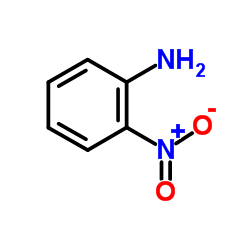 CAS#:88-74-4
CAS#:88-74-4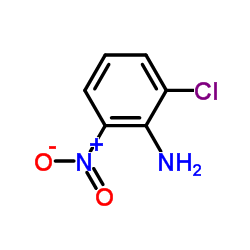 CAS#:769-11-9
CAS#:769-11-9 CAS#:59483-70-4
CAS#:59483-70-4 CAS#:305-80-6
CAS#:305-80-6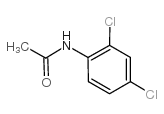 CAS#:6975-29-7
CAS#:6975-29-7 CAS#:65078-75-3
CAS#:65078-75-3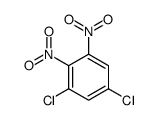 CAS#:28689-08-9
CAS#:28689-08-9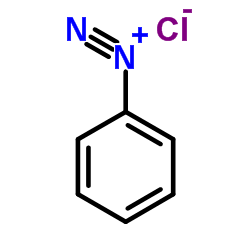 CAS#:100-34-5
CAS#:100-34-5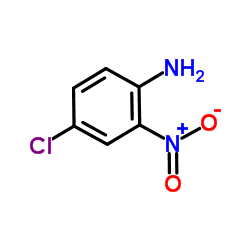 CAS#:89-63-4
CAS#:89-63-4 CAS#:554-00-7
CAS#:554-00-7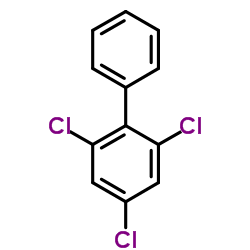 CAS#:35693-92-6
CAS#:35693-92-6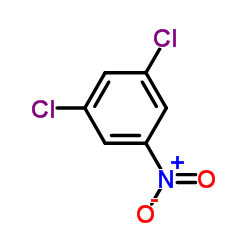 CAS#:618-62-2
CAS#:618-62-2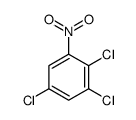 CAS#:34283-94-8
CAS#:34283-94-8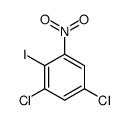 CAS#:189576-09-8
CAS#:189576-09-8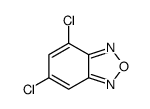 CAS#:7116-18-9
CAS#:7116-18-9 CAS#:5233-04-5
CAS#:5233-04-5